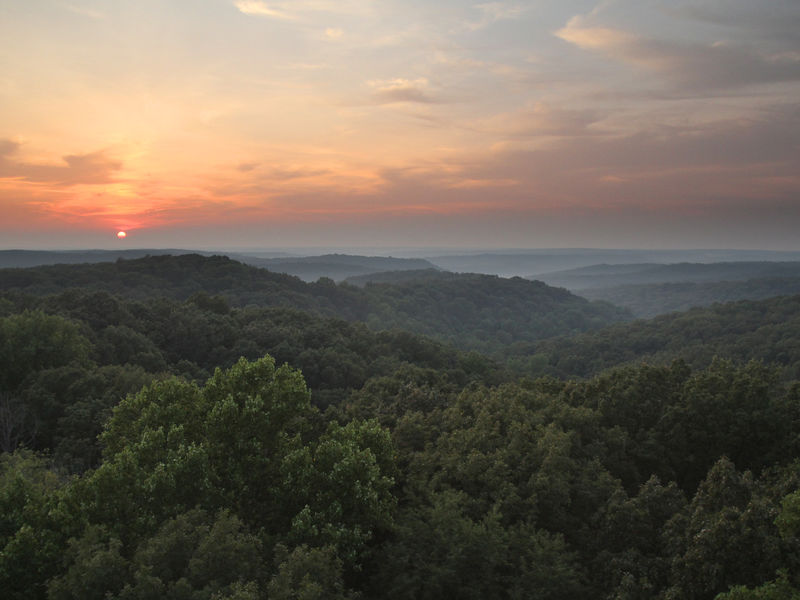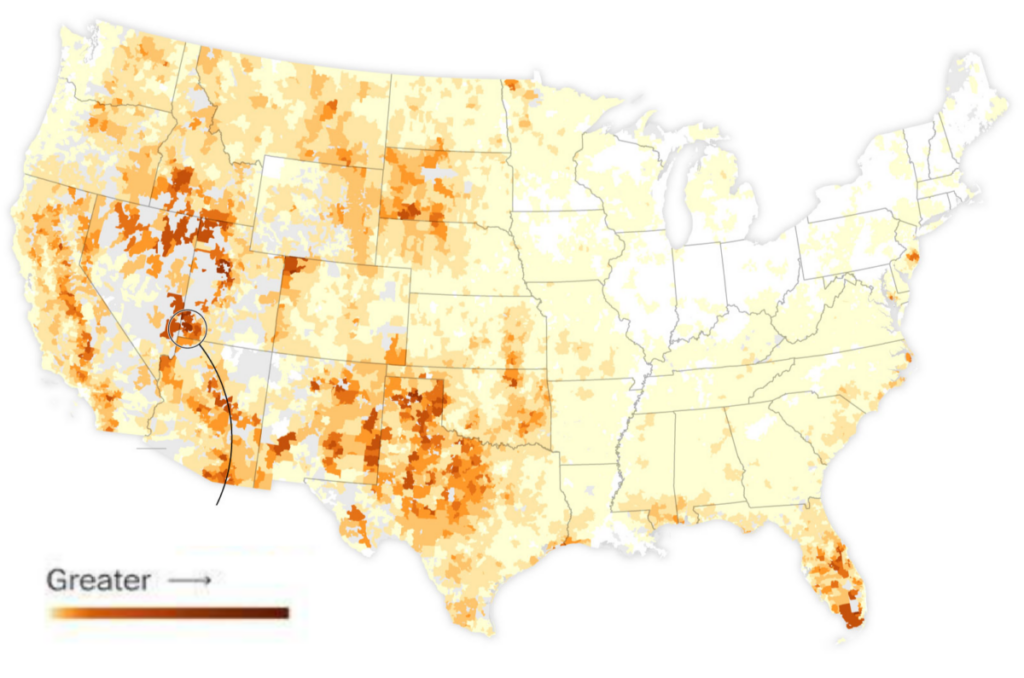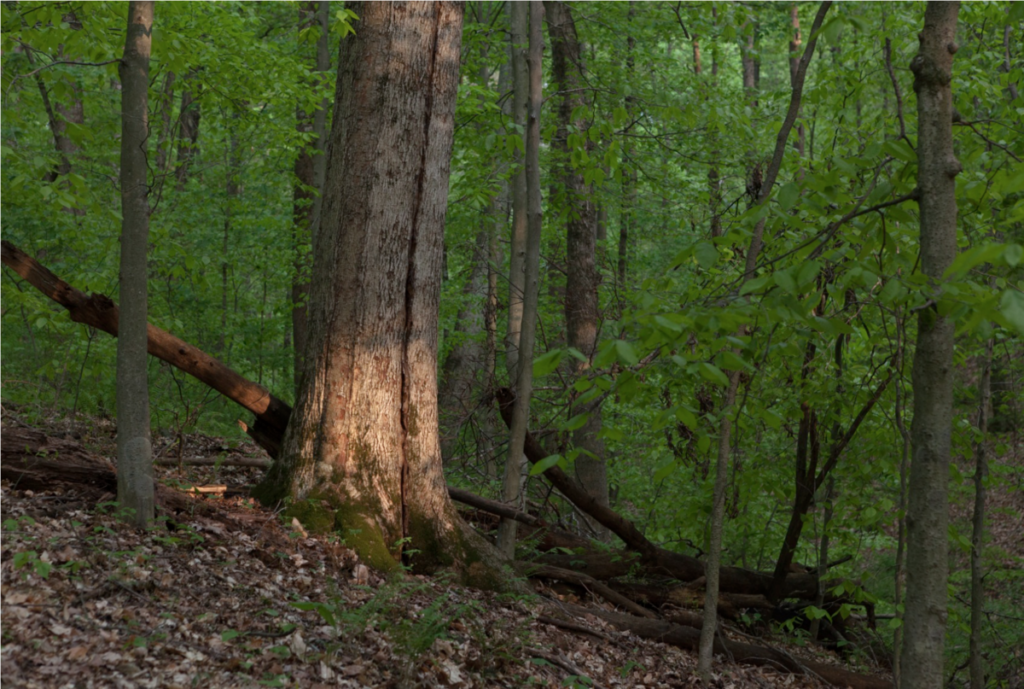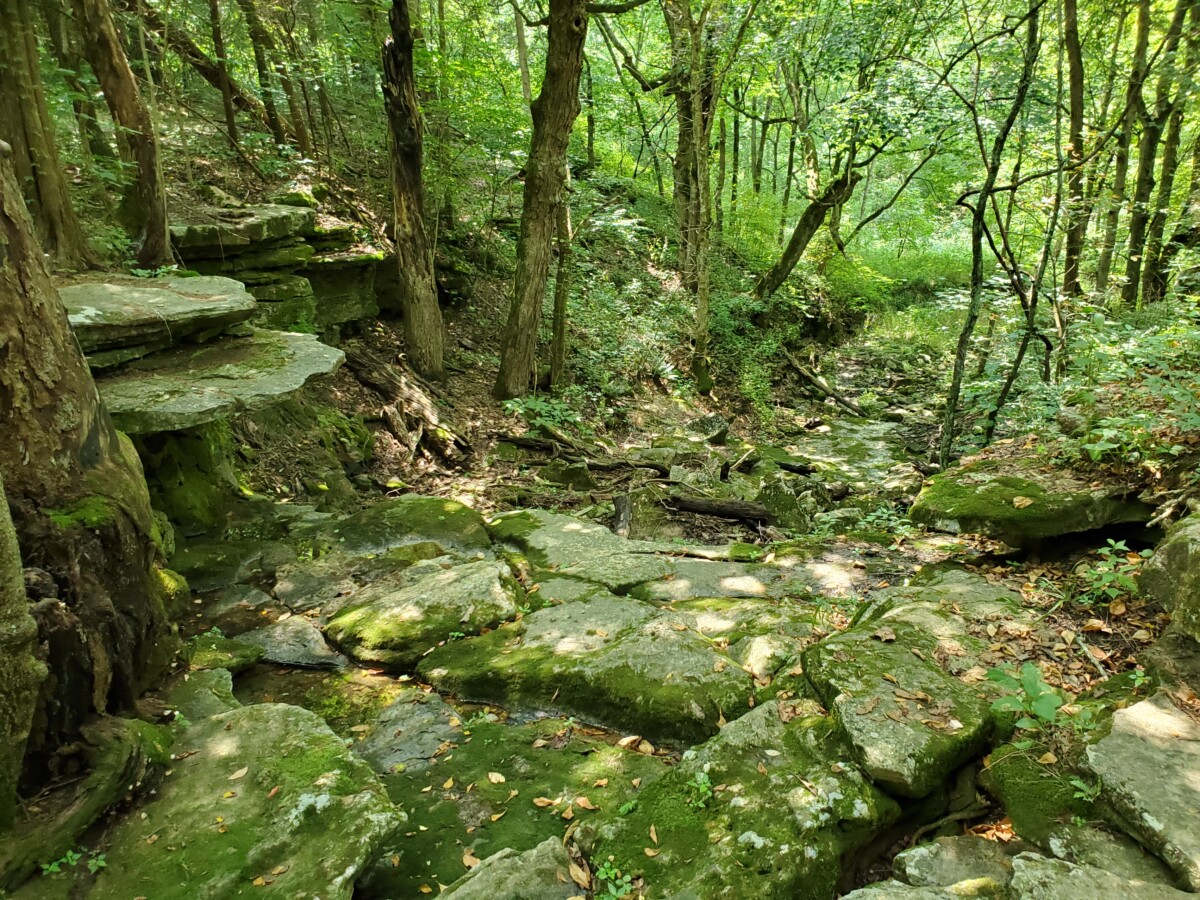(Rock formations in near Wesley Chapel Gulf, in Orange County, Ind. portion of Hoosier National Forest. Photo by: Jeff Stant)
On December 20, 2023, the Secretary of the United States Department of Agriculture (USDA), Thomas J. Vilsack, published a “Notice of intent to prepare an environmental impact statement” in the Federal Register to analyze the impacts of amending all national forest management plans including the plan for the Hoosier National Forest (HNF) to protect existing old growth forests and mature forests that are growing into old growth forests from timber harvests.
Never before has the federal government proposed such a sweeping action to manage all national forests for ecological rather than timber values. The proposal appears to reflect the Biden Administration’s determination that mature and old growth forests are “climate change mitigation powerhouses” that must be conserved as part of the nation’s all-out effort to alleviate the climate crisis.
This is potentially wonderful news for conservationists who are trying to restore more old growth forests in the HNF and other national forests in the lower Midwest where old growth forests have been reduced to a tiny proportion of what existed 200 years ago. The announcement should provide leverage for halting or scaling back three recently proposed logging operations which are also the largest such operations proposed in the history of the HNF. These are the Uniontown North Project currently underway, the Houston South Project, under challenge and on hold by Federal District Court, and the Buffalo Springs Project proposed in a Draft Environmental Assessment. The Forest Service intends to log some 12,000 acres over the next 12 years and burn 32,000 acres repeatedly in these projects. Some 33 to 60 percent of the forests in the project areas meet the definitions for mature or old growth hardwood forest in a Forest Service inventory of such conditions in the national forests completed in April, 2023. The inventory defines old growth in the eastern national forests as forests between 100 and 160 years old that contain 5 to 20 trees per acre with a size of at least 12 to 20 inches diameter at breast height. Dozens of such stands in these three projects theoretically could receive a reprieve from logging under this Forest Plan Amendment.
However, a close reading of the Notice reveals that the USDA is creating significant leeway for the Forest Service to continue the same logging and burning projects it has pursued for decades that have prevented mature forests from ever reaching the old growth condition. What the Forest Service calls “ecological restoration” today are the same activities we called logging and burning twenty years ago.
Furthermore, the Notice does not recognize that old growth forest is by nearly all legitimate definitions, forest that has not been disturbed by human activity for many years. For example, the Forest Stewardship Council which certifies forest harvest practices across the world for sustainability, defines old growth eastern hardwood forests as having no human disturbance for 80 to 100 years. The Notice proposes a “standard” for the Forest Plan Amendments that states, “3) Vegetation management within oldgrowth forest conditions may not be for the primary purpose of growing, tending, harvesting, or regeneration of trees for economic reasons.” But then adds, “Ecologically appropriate harvest is permitted in accordance with standards 1 and 2.“ Thus while the Notice gives lip service to the documented higher resilience of old growth forests to the stresses of climate change, it then proposes to allow the Forest Service in standards 1 and 2 to log or thin old growth forests to reduce pests and diseases or enhance old growth features by killing trees and leaving them standing as snags, knocking them down to provide horizontal structure or down woody debris or removing that debris to reduce fuel loads.
The USDA believes the Forest Service can produce better old growth forests in the national forests through actions that will inherently degrade the natural conditions that define old growth forests.
The Notice also claims that prescribed fire may be needed to “restore” natural ecosystems as the Forest Service is claiming in these projects in the HNF, even though there is no evidence that fire ever was a significant agent of natural disturbance in the moist central hardwood forests of the eastern US. In fact, the data base of fire occurrences in the HNF reveals that of 442 fires from 2002 to the spring of 2019, only three are reported to have come from natural causes, i.e., lightning strikes. They consumed 1.4 acres.1
1. This information is from data supplied by HNF to IFA, July 6, 2023 (file: 2002-2019_

The USDA is inviting public comment on the direction the agency should pursue under this scoping notice. Comments will be used to prepare an environmental impact statement (EIS) that will examine the impacts of the proposed nationwide amendment of all national forest management plans to conserve and expand old growth forests. The public is encouraged to provide comments on this scoping notice by clicking here.
Or to physically mail your comment to:
Director, Ecosystem Management Coordination
201 14th Street SW, Mailstop 1108
Washington, DC 20250–1124
PLEASE TELL THE USDA TO RESTORE OLD GROWTH FORESTS IN THE HNF AND OTHER NATIONAL FORESTS.
Here are some suggested talking points:
LET NATURE BE: Humans cannot manufacture old growth forest. The best way to restore old growth forest within the HNF and many other eastern national forests is for the Forest Service to simply leave mature forests alone and study them to gain a better understanding of how mature eastern hardwood forest returns to the old growth condition and how old growth forest will respond to climate change.
STOP BURNING CENTRAL HARDWOOD FORESTS: Tell the USDA that it must restrain the Forest Service from its plans to conduct prescribed burns throughout the HNF and other eastern national forests until it has established a scientific, factual record that fire was a significant natural disturbance agent in the central hardwoods and should not allow prescribed burning otherwise. The map below of areas prone to fire disturbance in the U.S. demonstrates that Indiana is in the heart of the region least prone to fire.

STOP LOGGING MATURE HARDWOOD FORESTS: Tell the USDA that other than for the removal of nonnative invasive vegetation, vegetative management, i.e., cutting or thinning native trees and understory, is exactly what will prevent hardwood forest from returning to the old growth condition in the HNF and other eastern national forests.
Much of the forest within the HNF is a century or more old and only a few decades at most from returning to the old growth condition. Tell the USDA not to let the Forest Service retard the restoration of old growth forests by cutting mature forests under the ruse of “forest health” or making old growth forest “more resilient”, particularly in national forests like the HNF where there is abundant mature forest but very little undisputed old growth forest.
MONITOR MATURE AND OLD GROWTH FOREST: The Notice is correct in concluding that “geographically-informed adaptive implementation strategies” should be used to manage mature and old growth forests across US national forests. Given there is so little old growth eastern hardwood forest, the Forest Service should stop assuming it knows all there is to know about such forest. Tell the Forest Service that rather than spending most of its budget on logging and burning programs, you agree with the contention in the Notice that, “Consistent and effective monitoring of current and future old-growth forest conditions over time would better inform adaptive management.” This monitoring should document that the agency’s management is allowing significantly more old growth forest to return to the HNF and other eastern national forests.

For further information, contact: Jennifer McRae, Planning Team Leader, at 202–791–8488. Individuals who use telecommunication devices for the deaf and hard of hearing (TDD) may call the Federal Relay Service at 800–877–8339.
Alternatively, individuals may contact Evan Robbins, Indiana Forest Alliance Director of Communications and Legislative Affairs, at evan@indianaforestalliance.
Comments should be received by February 2, 2024. The proposed action and draft environmental impact statement are expected in May 2024 and will be accompanied by a 90-day comment period. A final environmental impact statement is expected in January 2025.

